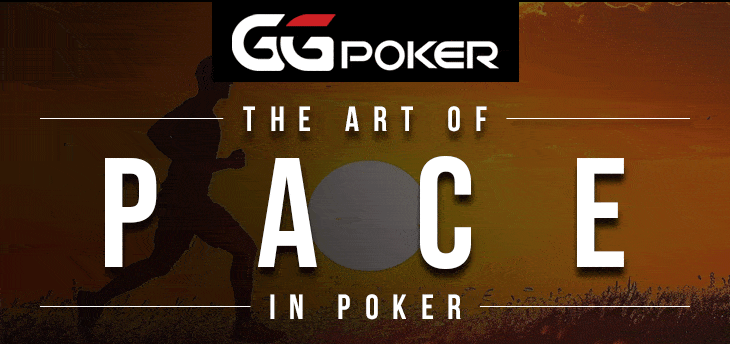Controlling the pace of a poker game is an essential skill that can dramatically influence the outcome of your sessions. Whether you’re playing a friendly game of Texas Hold’em at home or battling it out in the high-stakes environment of online poker, understanding how to manage the tempo can give you a significant edge over your opponents. But how exactly can you control the pace in poker, and why is it so crucial?
Historical Evolution of Pace in Poker
The tempo of poker has seen significant transformations over the centuries, mirroring changes in both societal attitudes toward gaming and technological advancements. Originally, poker was a leisurely affair, often a part of social gatherings where the pace of the game was dictated more by conversation and interaction than by the game itself. As poker made its way into casinos and became more structured, the pace began to quicken, influenced by commercial interests aiming to increase the number of hands played per hour.
The true revolution in the pace of poker, however, came with the rise of online poker in the late 20th century. Online platforms enabled games to proceed at a much faster rate due to automated dealing and the absence of physical chips and cards. Additionally, the introduction of formats like “turbo” and “hyper-turbo” games significantly accelerated the tempo, catering to players seeking quicker gameplay. This shift has required players to adapt their strategies dramatically, focusing more on quick decision-making and less on the psychological warfare that a slower-paced game might allow.

Today, the pace of poker continues to evolve with the advent of mobile gaming and app-based platforms, which often blend traditional slow-paced strategies with the rapid progression of online formats. This historical perspective on the evolution of game tempo underscores the importance of pace as a dynamic and integral element of poker strategy, reflecting broader trends in technology and player preferences.
Why Pace Matters in Poker
The pace of the game affects not only your strategy but also the psychological state of your opponents. A fast pace can pressure opponents into making hasty decisions, while a slower pace might encourage more thoughtful play, which could be advantageous or detrimental depending on the situation. Controlling the game’s tempo allows you to steer the game in a direction that plays to your strengths.
Setting the Tempo Early On
The key to controlling the pace begins as soon as you sit down at the table. Your initial plays set the tone for the rest of the game. For instance, consistently taking longer to make your decisions can establish a slower, more deliberate pace, allowing you more time to analyze the game and your opponents. Conversely, playing quickly can accelerate the tempo, ideal for throwing off cautious players or capitalizing on the anxious energy of aggressive opponents.
Tactical Betting: The Heartbeat of Poker
In Texas Hold’em, your betting patterns are the most direct tool you have for pace control. Aggressive betting can increase the game’s tempo, pushing other players to make quick decisions. This tactic is particularly effective in online poker environments where players often expect a faster game. On the flip side, by choosing when to slow down with your bets or opting to check, you can cool down the game’s pace, which can be useful if you need to reassess your strategy or manage your bankroll more carefully.
Managing the Clock in Online Poker
Online poker offers unique tools for pace control, such as a fixed time bank. Knowing how to manage your allotted time can be a significant advantage. For example, using your entire time bank during critical moments can add pressure to your opponents, while quick decisions in less critical hands can keep the game moving briskly, conserving your time bank for when you really need it.
Reading and Reacting to the Table Dynamics
A great poker player is not just focused on their own strategy but is also constantly reading the table. Understanding the pace preferences of your opponents can allow you to adjust your approach effectively. If you notice a player is uncomfortable with a fast-paced game, speeding up your play when they enter a hand can be a beneficial tactic. Conversely, against a player who thrives on rapid play, deliberately slowing down the game can throw them off balance.
The Psychological Play: Using Pace as a Mental Tool
Controlling the pace can also be a psychological weapon. Changing the speed of play unpredictably can frustrate opponents and lead them to make errors. The key here is not to settle into a predictable rhythm that others can easily read and adapt to but to keep your opponents guessing by altering the pace throughout the session.

When to Step on the Gas or Hit the Brakes
Knowing when to change the pace can be as crucial as how you do it. For example, if you’re holding a strong hand, you might choose to speed up to build the pot quickly. Conversely, if you suspect an opponent has a better hand, slowing down the game could prevent significant losses.
Conclusion
Controlling the pace in poker is about more than just the speed of play; it’s about using tempo as a strategic element to enhance your overall game plan. Whether in person or online, a well-paced game can lead to more favorable outcomes and a more enjoyable experience. Remember, the key to success in poker isn’t just playing your cards right but playing your opponents even better. By mastering the art of pacing, you’re not just playing the game; you’re playing to win.




